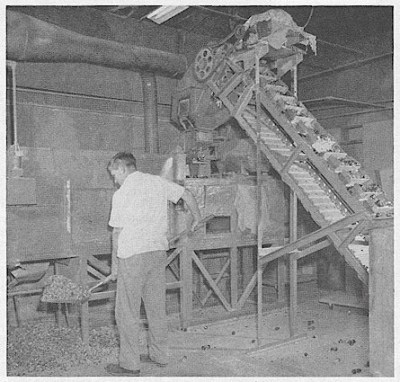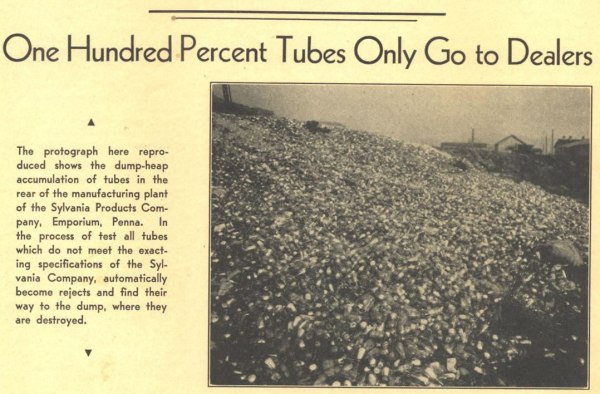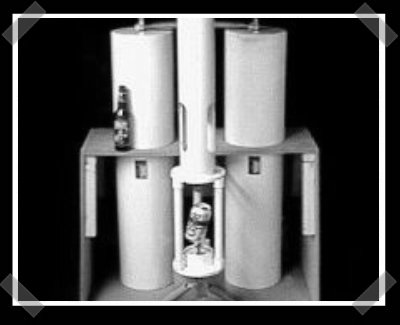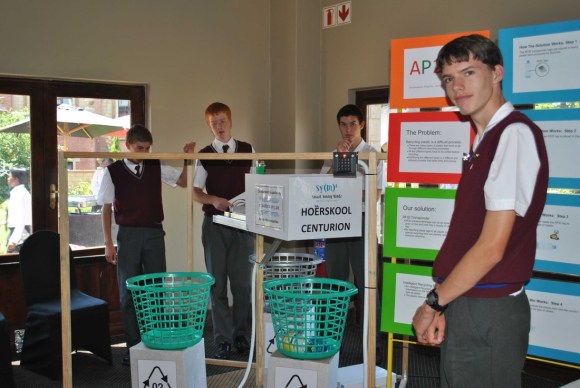This week, we’re switching off the ‘Tube and taking a field trip to Emporium, Pennsylvania, home of the Sylvania vacuum tube manufacturing plant. Now, a lot of companies will tell you that they test every single one of their products, ensuring that only the best product makes it into the hands of John Q. Public. We suspect that few of them actually do this, especially these days. After all, the more reliable the product, the longer it will be before they can sell you a new one.
 For Sylvania, one of the largest tube manufacturers of the golden age, this meant producing a lot of duds. A mountain of them, in fact, as you can see in the picture above. This article from the January 1957 issue of Popular Electronics vilifies forgers who used all kinds of methods to obtain defective tubes. They would then re-brand them and pass them off as new, which was damaging to Sylvania’s good name and reputation.
For Sylvania, one of the largest tube manufacturers of the golden age, this meant producing a lot of duds. A mountain of them, in fact, as you can see in the picture above. This article from the January 1957 issue of Popular Electronics vilifies forgers who used all kinds of methods to obtain defective tubes. They would then re-brand them and pass them off as new, which was damaging to Sylvania’s good name and reputation.
In addition to offering a reward for turning in known tube forgers, Sylvania did the most reasonable thing they could think of to quash the gray market, which was building a tube-crushing machine. Pulverizing the substandard tubes made sure that there were no “factory seconds” available to those fraudsters. After crushing shovelful after shovelful of tubes, the glass splinters were removed through a flotation separation process, and the heavy metals were recovered.
Did we get you all hot about tubes? Here’s how Mullard made their EF80 model.
[Thanks for the tip, Fran!]
Retrotechtacular is a weekly column featuring hacks, technology, and kitsch from ages of yore. Help keep it fresh by sending in your ideas for future installments.


![Image is © aliceazzo [http://aliceazzo.deviantart.com/].](https://hackaday.com/wp-content/uploads/2014/10/9132521412537668507.jpg?w=300)


















